
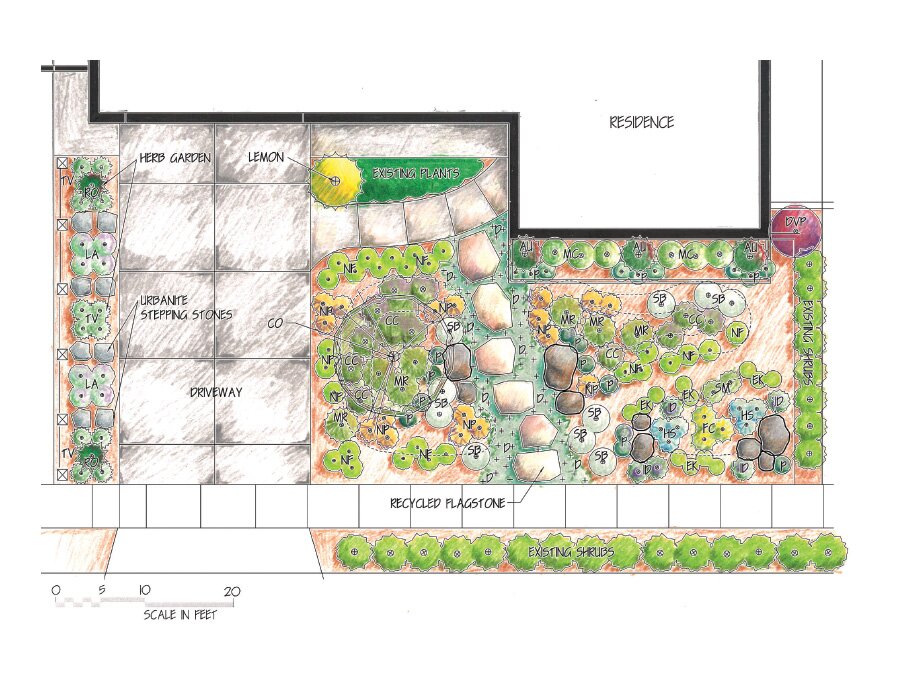
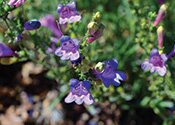
Blue Spring Penstemon |
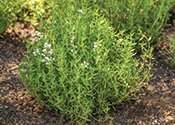
Garden Thyme |
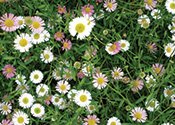
Fleabane |
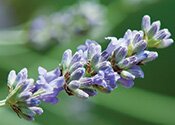
English Lavender |
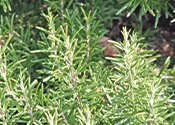
Rosemary |
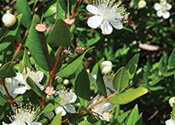
True Myrtle |
About the Concept Design Series
These designs are simple concepts to provide inspiration and ideas. Check with local nurseries, landscapers or other sustainable garden designers to help choose the best plants for your yard.
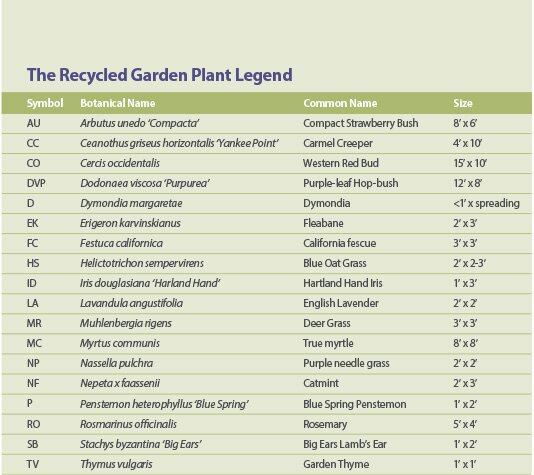
Sustainable Gardening Resource List
For general installation, understanding of sustainable gardens, and other details, read the factsheets in the Green Gardens Healthy Creeks series. Each of those factsheets provides in depth information to guide homeowners through the process of installing sustainable gardens.

Why We Liked This Garden
Showcase Features:
Installing a new landscape can require the purchase of a lot of new materials. Not only can it be costly, but it can also be taxing on our natural resources. This garden focuses on the use of recycled materials. Home reuse facilities can be a great source for purchasing previously used materials, such as the flagstone used for the pathway in this garden. Repurposed pavers, bricks, boulders and so on can often be found, allowing for a variety of looks to be accomplished in the landscape. This garden also features a raised planter bed constructed of recycled wood and urbanite (broken concrete) stepping stones in the herb garden area. Recycled concrete sand and drain rock products were also purchased for the rain gutter drainage system constructed under the surface of the garden. Decorative mulch made from recycle wood products, available in a variety of colors, along with compost made from green waste collection was available from local waste management facilities and used in the garden. This garden meets the requirements of the Santa Clara Valley Water District’s Landscape Rebate Program.
Plants:
This garden features a mixture of native and non-native plants with similar low water and light exposure needs. Groupings of native ground cover Ceanothus, Carmel Creeper (CC), and Deer Grass (MR) were paired with a number of hardy, long flowering non-native plants such as the low growing Catmint (NF) and Fleabane (EK). Low growing Dymondia (D), which can take some foot traffic, was planted in mass to fill in around the flagstone pathway.
The herb garden to the left of the driveway features culinary Garden Thyme (TV) and Rosemary (RO) and fragrant English Lavender (LA).
Light:
This garden requires full sun, as in south facing garden.
Watering Needs:
All of the perennial plants in this garden have low to very low watering needs. Use tree tubes and bubblers to deep water trees. Microspray overhead irrigation can be used to establish the ground cover Dymondia (D).
Construction Notes for Sustainable Landscaping
- Use a base of sand to level often irregular pieces of broken concrete (urbanite) used for stepping stones.
- Urbanite can also be used to construct raised planters and low retaining walls.
- To avoid cracking, be sure to use 1 3/4" to 2" thick pieces of flagstone for the pathway.
- Set the leveled flagstone pieces or pavers onto decomposed granite or sand to allow water to percolate into the soil.
- Visit home reuse facilities during the design and construction phase of the garden to find unique recycled materials to use in the garden.
- Materials from these facilities often come in limited quantities, so various materials can be artistically combined to achieve a desired look.
- Downspouts can be connected to solid pipes and redirected into the dry creeks or connected to perforated pipes buried underground to allow water to seep slowly back into the ground.
- Soil can be mounded in such a way to keep surface runoff onsite.
- Use soil excavated from the pathways to build mounds, reducing waste.
- Grade soil so water drains away from the foundation of the house.
- If using boulders in the landscape, dig them into the soil a few inches to create a more natural look.
- Group various sized boulders together to create an outcropping.